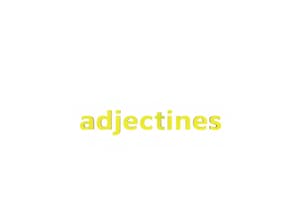Podcast
Questions and Answers
There are three __________ of comparison: Positive, Comparative, and Superlative.
There are three __________ of comparison: Positive, Comparative, and Superlative.
degrees
The comparative form of short adjectives is usually formed by adding __________ to the base form.
The comparative form of short adjectives is usually formed by adding __________ to the base form.
-er
The irregular adjective 'good' forms its comparative and superlative forms as __________ and __________.
The irregular adjective 'good' forms its comparative and superlative forms as __________ and __________.
better, best
The superlative form of long adjectives is formed by using __________ before the base form.
The superlative form of long adjectives is formed by using __________ before the base form.
The comparative form of the adjective 'far' forms its comparative and superlative forms as __________ and __________.
The comparative form of the adjective 'far' forms its comparative and superlative forms as __________ and __________.
Adjectives that do not follow the regular comparative forms are called __________ adjectives.
Adjectives that do not follow the regular comparative forms are called __________ adjectives.
Flashcards are hidden until you start studying
Study Notes
Degrees Of Comparison
- There are three degrees of comparison:
- Positive (base form): used to describe a noun or pronoun
- Comparative (more/most): used to compare two nouns or pronouns
- Superlative (most): used to compare three or more nouns or pronouns
Comparative Forms
- Regular comparative forms:
- Formed by adding -er to the base form (e.g. big → bigger)
- Use more before the base form if the adjective has two or more syllables (e.g. beautiful → more beautiful)
- Comparative forms of short adjectives (one syllable):
- Usually formed by adding -er (e.g. fast → faster)
- Some exceptions: good → better, far → farther/further
- Comparative forms of long adjectives (two or more syllables):
- Use more before the base form (e.g. interesting → more interesting)
Irregular Adjectives
- Adjectives that do not follow the regular comparative forms:
- good → better → best
- far → farther/further → farthest/furthest
- old → older → oldest
- many/much → more → most
Superlative Forms
- Regular superlative forms:
- Formed by adding -est to the base form (e.g. big → biggest)
- Use most before the base form if the adjective has two or more syllables (e.g. beautiful → most beautiful)
- Superlative forms of short adjectives (one syllable):
- Usually formed by adding -est (e.g. fast → fastest)
- Some exceptions: good → best, far → farthest/furthest
- Superlative forms of long adjectives (two or more syllables):
- Use most before the base form (e.g. interesting → most interesting)
Degrees of Comparison
- There are three degrees of comparison: positive, comparative, and superlative
- Positive degree is used to describe a noun or pronoun
- Comparative degree is used to compare two nouns or pronouns
- Superlative degree is used to compare three or more nouns or pronouns
Comparative Forms
- Regular comparative forms are formed by adding -er to the base form (e.g. big → bigger)
- Use more before the base form if the adjective has two or more syllables (e.g. beautiful → more beautiful)
- Comparative forms of short adjectives (one syllable) are usually formed by adding -er (e.g. fast → faster)
- Exceptions to regular comparative forms: good → better, far → farther/further
Irregular Adjectives
- Good → better → best
- Far → farther/further → farthest/furthest
- Old → older → oldest
- Many/much → more → most
Superlative Forms
- Regular superlative forms are formed by adding -est to the base form (e.g. big → biggest)
- Use most before the base form if the adjective has two or more syllables (e.g. beautiful → most beautiful)
- Superlative forms of short adjectives (one syllable) are usually formed by adding -est (e.g. fast → fastest)
- Exceptions to regular superlative forms: good → best, far → farthest/furthest
Studying That Suits You
Use AI to generate personalized quizzes and flashcards to suit your learning preferences.




